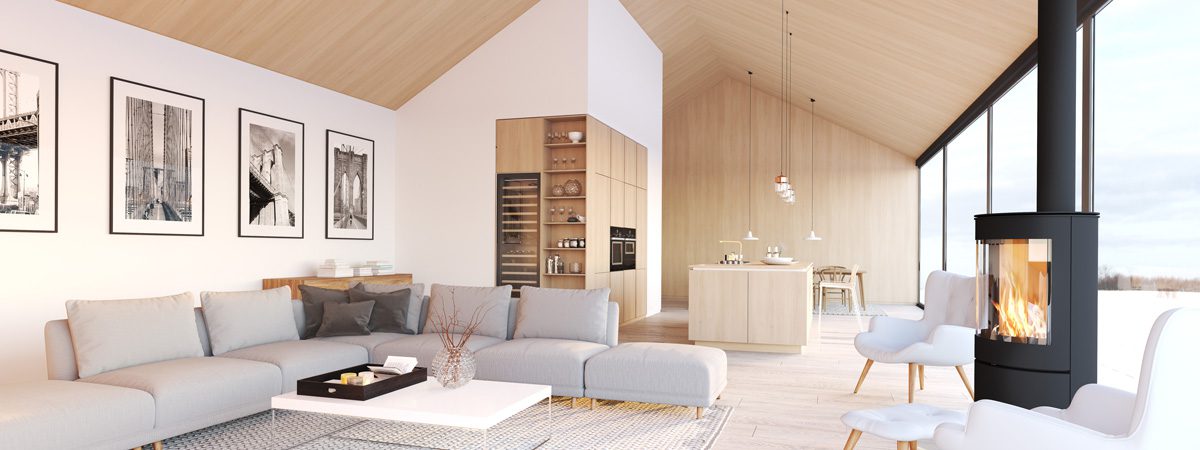Homeowners strive to create a comfortable and welcoming environment within their homes. However, as the weather changes throughout the year, it’s essential to adapt your home’s interior to ensure maximum comfort and energy efficiency.
By taking a proactive approach and making thoughtful adjustments, you can create a space that’s conducive to both hot summers and chilly winters. Below are various strategies for adapting your home’s interior to changing weather conditions.

Insulation Is Key
Proper insulation is essential for maintaining a comfortable temperature in your home, especially in regions with extreme weather conditions. In summer, insufficient insulation allows the sun’s heat to enter your home, making it uncomfortably hot and straining your air conditioning system. During winter, inadequate insulation permits cold drafts to infiltrate your home, causing discomfort and increasing heating costs.
Effective insulation protects against temperature extremes, keeping the heat out during summer and preventing cold air from seeping in during winter.
To ensure optimal insulation, below are some ways:
- Inspect windows and doors for gaps.
- Seal any gaps found in windows and doors using weatherstripping or caulk.
- Assess the insulation levels in walls, attic, and floors.
- Add insulation to walls, attic, and floors as needed.
- Ensure proper installation and coverage of insulation materials.
- Regularly check for any new gaps or areas that may require additional sealing.
- Monitor the effectiveness of insulation by observing energy consumption and indoor temperature fluctuations.
- Make necessary adjustments or additions to insulation based on the observed performance.
Ultimately, improving insulation enhances comfort and reduces energy consumption.
Harness Natural Light And Ventilation
Harnessing natural light and ventilation is vital for creating a comfortable indoor environment throughout the seasons. In summer, you can reduce reliance on artificial lighting by opening curtains and blinds to welcome sunlight. However, excessive sunlight can raise the temperature indoors, leading to discomfort.
To address this, consider incorporating plantation shutters Melbourne into your home. These versatile window coverings enable you to regulate the amount of sunlight entering your space.
Adjusting the shutters allows you to block direct sunlight while enjoying the advantages of natural light and fresh air. Plantation shutters provide an elegant solution to balance illumination and temperature control, ensuring a pleasant atmosphere indoors.
Window Treatments For Temperature Control
Window treatments play a crucial role in temperature control within your home, as windows are known for their impact on heat gain or loss. Investing in window treatments that offer insulation and temperature regulation is beneficial.
Various options, such as cellular shades and heavy curtains with thermal lining, can help maintain a comfortable indoor climate. These treatments act as barriers, minimizing the transfer of heat or cold from the outside and ensuring a cozy home environment throughout the year.
By choosing the right window treatments, you can effectively control the temperature in your home and enhance energy efficiency.
Adjusting Ceiling Fans
Ceiling fans are not just useful during summer; they can also be beneficial in winter. Most ceiling fans have a reverse switch that changes the direction of the blades’ rotation.
In warmer months, set your fans to rotate counterclockwise to create a cooling breeze. Conversely, during winter, switch the direction to clockwise. This will create an updraft, pushing warm air down from the ceiling and redistributing it throughout the room.
By utilizing ceiling fans effectively, you can optimize the temperature in each season without relying heavily on heating or cooling systems.
Use Area Rugs And Throws
Another tip to adapt your home’s interior to changing weather conditions is to use area rugs and throws. When winter arrives, maintaining a cozy and warm atmosphere becomes crucial. Incorporating area rugs and throws into your interior décor can help enhance the aesthetics and add a layer of insulation.
Rugs are a barrier between the cold floors and your feet, preventing heat loss and creating a more comfortable environment. Additionally, draping cozy throws over couches or chairs provides extra warmth when needed. Opting for thicker fabrics like wool or fleece increases their insulating properties, ensuring better heat retention.
By utilizing area rugs and throws, you can create a cozier ambiance and effectively combat the chill of winter, making your home a comfortable retreat from the cold weather.
Smart Thermostats For Efficient Heating And Cooling

Investing in a smart thermostat is an excellent way to optimize your home’s temperature control and energy usage. These devices allow you to program heating and cooling settings based on your schedule, ensuring comfort when you need it and conserving energy when you don’t. Some smart thermostats even learn your preferences over time and automatically adjust the temperature to your liking. Using technology to manage your home’s climate helps you adapt to changing weather conditions effortlessly while minimizing energy waste.
Conclusion
Maintain a comfortable and energy-efficient home by adapting to changing weather conditions. Follow these tips to create a versatile and welcoming space that prioritizes your well-being while reducing environmental impact. Enjoy a sanctuary that seamlessly adapts to seasonal variations.


